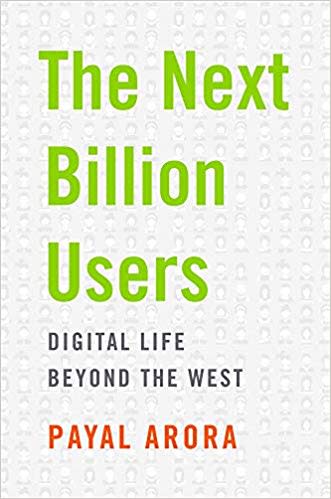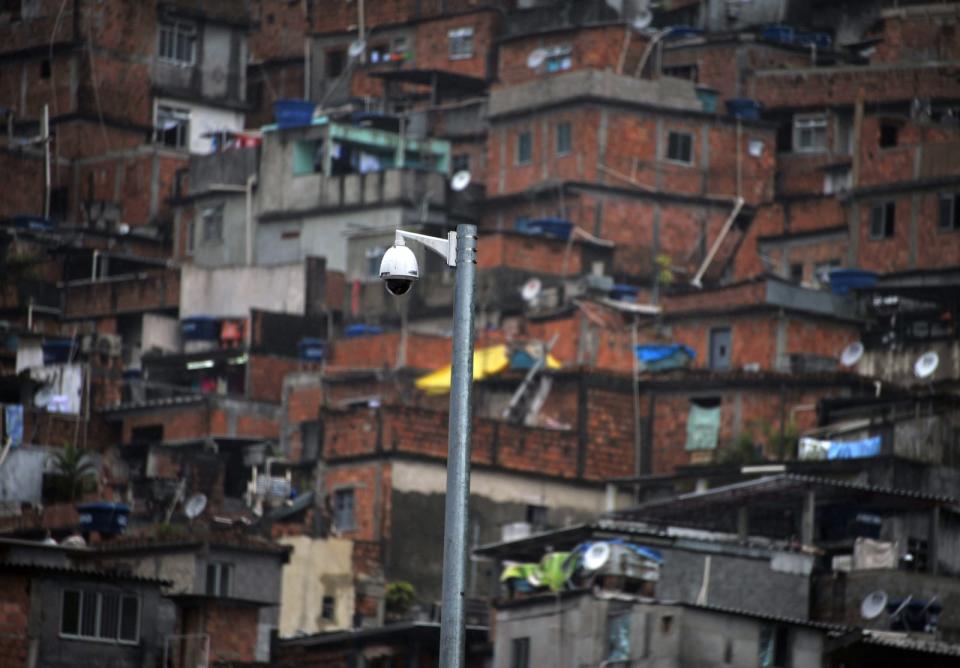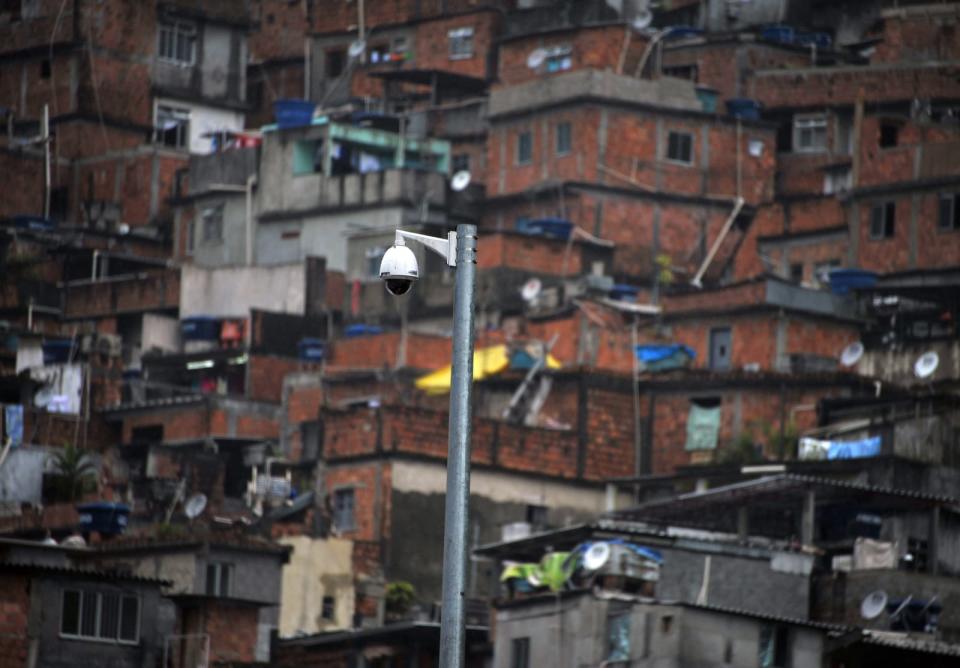Hitting the Books: Modern surveillance and 'the science of happiness'
It's spying on your citizens, but for their own good.
Welcome to Hitting the Books. With less than one in five Americans reading just for fun these days, we've done the hard work for you by scouring the internet for the most interesting, thought provoking books on science and technology we can find and delivering an easily digestible nugget of their stories.
The Next Billion Users: Digital Life Beyond the West
by Payal Arora

Even as cities across the US grapple with the spectre of omnipresent, automated government surveillance, and the existential threat to civil liberties that the technology holds, a number of nations around the globe have adopted these tools to monitor the lowest, and coincidentally most vulnerable, stratas of their societies.
In this excerpt from The Next Billion Users, author Payal Arora reveals the colonial roots of government surveillance, its role in reinforcing societal disequilibrium, and explains how the modern technological marvels of our digital age might exacerbate these problems.
Digital Surveillance of the Poor
Surveillance has a colonial heritage. Most countries outside the West underwent long periods of colonial rule. The rulers designed new techniques to control colonized populations to prevent uprisings. The criminologist Simon Cole argues that colonizers were the pioneers of identification technologies. For instance, in the mid-nineteenth century, the British Empire instituted fingerprinting to track its subjects. It was a brilliant means of linking the individual body to the state. The very essence of personhood, the fingerprint, was used against the self in the name of social order. The collecting and recording of fingerprints forced all colonized subjects into a classification system. This early biometric technology, used on criminals back home, became a standard method to record all natives from the colonies, framing an entire populace as latent criminals.
Previous to this, people were identified through sensory recognition. Recording of body descriptions was common. For instance, "a mole on the cheek," "small eyes," "large forehead," or "thin lips" were typical ways of identifying people based on their physical attributes. Notes on whether the person had marks from smallpox, or if they had a gunshot wound, as well as if they stammered or talked slowly, were all documented as added inputs to profile the individual.
An issue arose when it came to recognizing and profiling Indian natives. British bureaucrats of the time noted in their logs that they found it tremendously difficult to "tell one Indian from another." That was problematic. It was important to be able to differentiate the "troublemakers" who could provoke an uprising from the law-abiding masses. The fear of political upheaval was a constant motivator to identify and track the so-called unruly subjects. The fingerprinting technique was timely indeed.
In order to make bodily surveillance more palatable, the British rulers repackaged this elaborate system of acquiring such intimate knowledge as a paternal act. The natives were told that fingerprinting was a way to protect them and give them access to certain public services that many had been deprived of, such as pensions for the native clerks working for the British bureaucrats. Connecting surveillance with the everyday lives of the native subjects normalized this system and gave it the appearance of benevolence. Unfortunately, the native elite learned well from their masters how to perpetuate this disciplinary surveillance apparatus. When the colonizers left, the system they had set up did not leave with them but instead became the foundation for many of the postcolonial institutions that today are ongoing obstacles to social equality.
Interestingly, in the British industrial era the British proletarians were treated in much the same way as colonial subjects. British administrators in the eighteenth century described policing as the "science of happiness." The poor needed to be saved from themselves. Sir John Fielding, a notable English magistrate and social reformer, viewed the poor as a "contaminating force" who needed to be contained to protect the dignity of society. The poor needed to be constantly scrutinized, diagnosed, and monitored lest they get out of control, he argued, and those from outside the locality should do the policing.
Poor people's "idleness" was particularly threatening. Police were instructed to strictly monitor the leisure activity of the poor in order to tame their debased immortality.
The most intimate features of the activities of the poor and the wayfaring—their habits, customs and resorts—should be made accessible to the intelligence of a new improved police. The poor were to be tracked down, classified, counted, and ordered. Their behaviors were to be prised open and catalogued.
Today we see similar patterns in the policing of the poor. New technologies of surveillance are aimed at poor communities, supposedly to provide welfare services or to institute law enforcement. These communities, particularly in developing countries, have long been used by the state to test out new surveillance techniques. Hence, it should not be a surprise that the poor have come to expect and even live with these tools of control. Take the Snowden revelations in 2013. While the media went into a frenzy over these leaks, for the poor this was old news. Their privacy is violated daily. The stop-and-frisk policy in the United States allows police to frisk and question any person on the street on the grounds of "reasonable suspicion." This has translated into profiling, and African American and Hispanic people in low- income neighborhoods have become targets of interrogation. The homeless are surveilled through closed-circuit television cameras at shopping malls, shelters, urban parks, and city benches. Welfare mothers are closely monitored under an "ethics of care" approach, as social workers demonstrate their concern through regular inspections. The welfare state is a surveillance state. The state demands an unequivocal naked transparency as a trade-off for services provided.
New systems of government surveillance are more sophisticated than ever before. The global media praised the Indian government when they launched the ambitious Biometric Identity initiative in India, known as the Aadhaar project. BBC endorsed this effort, reporting that the poor, "with [previously] no proof to offer of their existence will leapfrog into a national online system, another global first, where their identities can be validated anytime anywhere in a few seconds." The goal of the project is to provide a unique identification number (UID) to each of the 1.2 billion Indian citizens through the capturing of their fingerprints, iris scans, and photographs. This consolidated digital identity serves as a primary portal through which citizens gain access to government services such as welfare, banking, and food rations for those at the margins of society. It aims to bring all of the undocumented poor into the system. R. S. Sharma, then secretary of the Department of Electronics and Information Technology in India, declared, "Digital India is not for rich people... it is for poor people."
India is not alone among nations in the digital tracking of citizens. China has revealed a comprehensive plan to reify its vision of a good society and a good citizen by creating a unified digital system—the Social Credit System—which it plans to fully implement by 2020. By combining citizens' financial records, online shopping data, social media behavior, and employment history, the system will produce a "social credit" score for each citizen. This rating system will be used to measure the citizens' trustworthiness. Each citizen will earn credit through good behavior, online and offline. This will directly affect their access to all kinds of public services, including the nation's financial credit system. In essence, it is a value-embedded system meant to encourage good behavior and discourage bad behavior. According to the Chinese government's Planning Outline for the Construction of a Social Credit System, the system aims to measure and enhance "trust" between the citizen and the government and within the commercial sector by strengthening the "sincerity in government affairs, commercial sincerity, social sincerity and the construction of judicial credibility."
China's Social Credit System is being built on an already existing system—Sesame Credit, owned by Alibaba, the eBay of China. This gamelike application helps document a person's actions on the site and provides a total score of the "goodness" of the individual. The person can then share this profile with his or her family and friends. Users are encouraged to make decisions about whether or not to interact with other users based on their credit scores. This is not an unprecedented idea. Since the Mao era, the Chinese government has maintained the Dang'an system, which closely monitors each citizen in every aspect of their daily lives. A file is kept on each Chinese citizen, beginning at their birth. The file includes their grades in school, their housing situation, their families, and other details over the course of their lives. Employers receive these files to help them in their hiring decisions.
While the Social Credit System is an extension of the Dang'an system in many respects, it differs in one significant way. This digital system can now harness the nuanced choices, personal behaviors, and social networks of Chinese citizens that eluded surveillance in the past. Digital platforms give governments a portal into citizens' homes, lives, and bedrooms. In a digitally mediated life, nothing is private. Unsurprisingly, the administrators of this system are the technology companies. Armed with exclusive licenses to sell credit-rating services, eight Chinese companies, including the internet giants Tencent and Alibaba, mine as much data as possible about their consumers.
The calculations affecting ratings give insight into what the society prioritizes as worthy. For instance, Tencent, a major Chinese social network portal, found that people who bought curtains or scuba gear somehow evoked more trust from people reviewing their profiles, while those who purchased photography equipment were deemed as less trustworthy. Those who play video games got lower scores, as gaming is seen as a wasteful activity. Buying baby-related items brings one's score up. Things get more worrisome when seemingly unrelated web portals start collaborating. Alibaba's Sesame Credit joined hands with Baihe, China's biggest matchmaking service. This partnership allows people to publicly view the credit scores of romantic prospects in order to decide whether to date them. This can lead to public shaming, as these scores are visible to friends, family, and colleagues.
This system can become highly discriminatory, as the scanning of social media accounts can sentence people to unemployment, slow internet connectivity, and travel visa bans based on their liking an anti- government post or being friends with those who don't share the state's communist values. Technology companies that do not comply with these "ethics" could be fined for supporting so-called immoral and indecent content. The poor usually suffer the most, as they have much to resist, much to protest about, and much to transform through collective action.
Take the Hukou system. Instituted in the mid-1980s, this residence registration system controlled the flow of migrants from rural to urban areas. Few would dispute that the 300 million such migrants worked hard and served as the engine of the Chinese economy in the last decade. Yet they are denied public services like education and health care. Their movements are severely curtailed, leaving them in a persistent state of vulnerability. The new digital monitoring through the Social Credit System promises to exacerbate an already desperate situation in need of urgent reform.
On the surface, Brazil seems to have taken a different path in its internet regulation. In 2014, Brazilians celebrated the landmark internet regulation initiative called Marco Civil, a progressive bill designed to protect citizens online and keep the internet free and open to the public. This included provisions for privacy rights, net neutrality, safe harbors for internet service providers, open government, and freedom of online speech as an exercise of civic rights. What was particularly novel in this effort was the collaborative process that shaped the making of the bill. In the draft phrase, more than 800 contributions came from nonprofit organizations, municipalities, and activists.
However, the actual law that was enacted was far from the draft version approved by the diverse stakeholders who participated in the drafting phase. For instance, freedom of speech was limited by adding provisions that gave the government further powers to monitor citizens online. Nonetheless, the Brazilian law can be a template for developing countries that are looking for models different from those of the Chinese and Indian datafication systems.
Whichever system of surveillance the state uses, the poor continue to be catalogued subjects. States continue to pioneer new techniques to enhance surveillance of the disenfranchised in the name of social and economic development. It is clear that the so-called information age did not arrive as a result of the digital age; it began long before. What is less clear is how the global poor understand and play with these new surveillance systems that can simultaneously liberate and entrap citizens with their very own data.
Excerpted from THE NEXT BILLION USERS: DIGITAL LIFE BEYOND THE WEST by Payal Arora, published by Harvard University Press. Copyright © 2019 by the President and Fellows of Harvard College. Used
by permission. All rights reserved.



